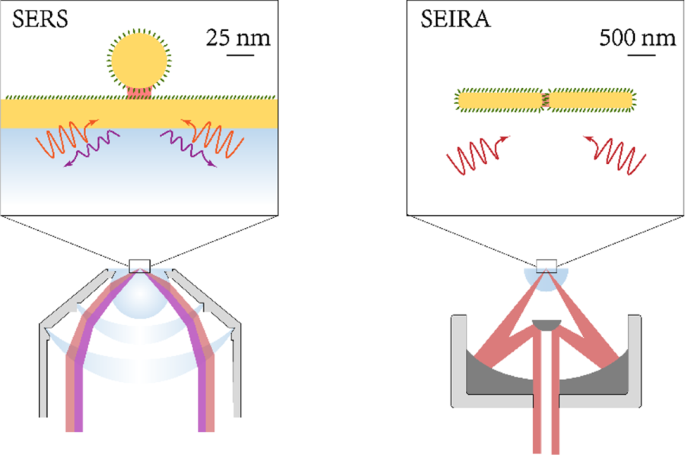Scientists are refining techniques to boost the sensitivity of molecular detection using light, focusing on methods called Surface-Enhanced Raman Scattering (SERS) and Surface-Enhanced Infrared Absorption (SEIRA). These techniques are powerful tools for identifying molecules, but detecting very small amounts, especially on surfaces, has been a persistent challenge.
Researchers are delving into the electromagnetic theories that underpin SERS and SEIRA to understand how to amplify their signals. The key to this enhancement lies in manipulating light at the nanoscale using specially designed structures. The intensity of both SERS and SEIRA signals relies heavily on the enhancement of the electromagnetic field at the surface where molecules are being analyzed.
Nanomaterials, particularly metallic nanostructures like gold and silver, play a crucial role in this field enhancement. When light interacts with these nanostructures, it can excite collective oscillations of electrons, known as plasmons. These plasmons create a concentrated and intensified electromagnetic field around the nanostructures. For SERS, this enhancement occurs in a two-step process: first, intensifying the incident light to excite molecules, and second, boosting the Raman scattering signal emitted by the molecules. SEIRA primarily benefits from the intensified incident light, which enhances the absorption of infrared light by the molecules.
Various nanostructure designs are being explored to maximize this signal boost. These include nanoparticles, closely spaced pairs of nanoparticles (nanodimers), and structures with extremely small gaps (nanogaps). More complex coupled structures, combining different types of plasmonic effects, are also showing promise for even greater sensitivity. For example, structures coupling localized surface plasmons (LSP) found in nanoparticles with surface plasmon polaritons (SPP) from metal films, or lightning rod effects from sharp nanotips are leading to significant improvements.
Recent advancements demonstrate the power of these approaches. Shell-Isolated Nanoparticle-Enhanced Raman Spectroscopy (SHINERS) uses nanoparticles coated with a thin inert shell, providing stability and preventing interference, while also allowing precise control over the crucial gap between the nanoparticle and the sample surface. Tip-Enhanced Raman Spectroscopy (TERS), utilizing a sharp metallic tip to scan surfaces, can achieve nanoscale and even sub-nanometer spatial resolution, pushing the boundaries of single-molecule detection.
While these techniques are reaching remarkable sensitivity, challenges remain. Quantum effects like electron tunneling at extremely small nanogaps can limit further enhancement. Researchers are also working to expand the applicability of SERS and SEIRA beyond specific molecules and noble metals to make them broadly useful for analyzing diverse materials. The ongoing refinement of nano-optical designs and a deeper understanding of the interplay between electromagnetic enhancement and quantum effects are paving the way for even more sensitive and versatile spectroscopic tools in the future.
Source link






